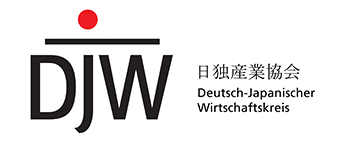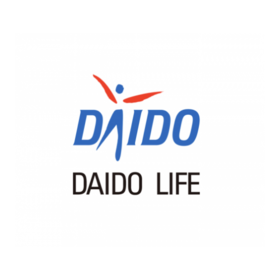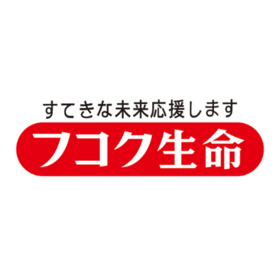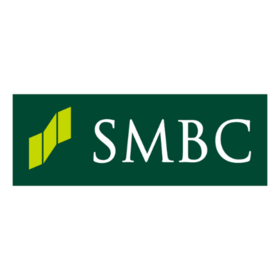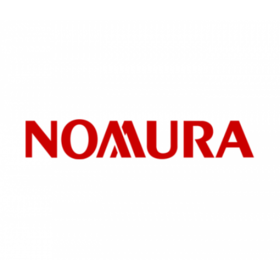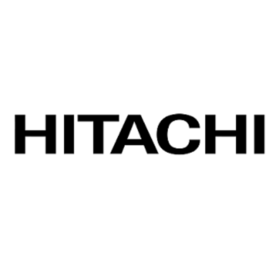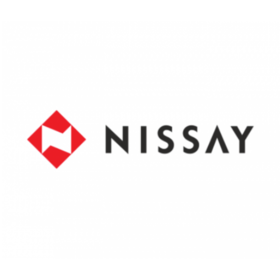Prof. Keiko Kawamata, Marketing School of Cultural and Creative Studies, Aoyama Gakuin University, et al.
Could growing JPC Events be a benefit for Inbound Tourism Promotion?
Suppose you are a marketing manager in the tourism industry and you are planning an online survey about intentions to visit Japan. How much do you think it would cost to obtain 500 German responses? A: 420,000, B: 1,400,000, or C: 2,675,000 (all in Japanese Yen)? The answer is C. (cf. A is French, and B is British.) Was heißt das? The more expensive the survey, the less intention there is to visit Japan; there are 6 times more French than Germans who would intend to visit Japan. Nevertheless, Germans, as well as the French and British, are one of the most important targets for Japanese tourism in order to achieve the goal of JPY 8 trillion in tourism-related income by 2020 (Nikkei Asian Review, 12 January 2018).
This report is a summary of the studies on the Evolution and Development Process of Japanese Pop Culture Events (Full Paper) and Information Searching Behavior of British, French, and German Tourists to Japan in the case of Content Tourism. In the following sections, we will briefly describe the Japanese political climate surrounding tourism and the content industry and present the evolution and development patterns of two well-known events, the Japan Expo (Paris) and Anime Expo (Los Angeles). A discussion of the possibilities of Japanese Pop Culture as a tourism resource will follow.
POLITICAL CLIMATE
Building a tourism nation
Tourism is important for Japan to address its serious population decline and the effects of its aging society. Despite its rich tourism potential (e.g., culture, nature, and heritage), Japan has not tapped into the inbound tourism market until recently (Japan Tourism Agency 2010). The Japanese government, led by the Liberal Democratic Party, launched the Visit Japan Campaign in 2003 to double inbound tourism from five million to 10 million foreign visitors by 2010. Except for the periods of the 2008 financial crisis and the 2011 Great East Japan Earthquake, the Visit Japan campaign has successfully boosted tourism (Figure 1). The Japanese government revised its tourism goal to 40 million foreign visitors (Figure 2) and spending by tourists to JPY 8 trillion by 2020, accordingly (Ministry of Land, Infrastructure, Transport and Tourism 2016).
Special Interest Tours: Content Tourism
In order to double and triple its inbound tourism, Japan should promote various types of tourism using SIT (Special Interest Tours: tourism based on particular interests, such as sports, culture, cuisine, and so on). Content tourism and anime tourism (e.g., media-induced tourism; fans travel to visit anime/film locations) are types of SIT, and the Anime Tourism Association announced an ambitious projection in 2020 to reach four million inbound visitors (10% of the 40 million target) for content tourism. In the next section, we will take a look at the current situation of Japan’s content industry.
“Cool Japan” Strategy
During the past few years, Japan’s content industry has attracted considerable attention as its next leading industry, and the Ministry of Economy, Trade and Industry established a new Creative Industries Promotion Office in 2010. Expectations for the industry were fueled in 2012, when a minister in charge of “Cool Japan” to promote the “Cool Japan Strategy” was appointed, followed by the foundation of the “Cool Japan Fund” in November of 2013. Despite the expectation, the content industry decreased from JPY 13.8 trillion (EUR 106.2 billion *EUR/JPY=130) in 2008 to JPY 12.4 trillion (EUR 95.3 billion) in 2016 (Dejitaru Kontentsu Hakusho [Digital Content White Paper] 2017 (in Japanese).
In the meantime, the global Media & Entertainment market reached revenues of USD 1.9 trillion in 2016, according to the 2016-2020 Entertainment & Media Outlook by PricewaterhouseCoopers, and is expected to expand by nearly five percent to reach just under USD 2 trillion in 2017. In 2016, China (USD 190 billion) became the second largest market after the United States (USD 712 billion), followed by Japan (USD 157 billion), Germany (USD 97 billion), and the United Kingdom (USD 96 billion). France came in sixth, at USD 69.3 billion.
EVOLUTION AND DEVELOPMENT OF JPCEs
What is Japanese Pop Culture?
In this study, “Japanese Pop Culture” (hereinafter referred to as JPC) refers to the “expression of the essence of modern Japan” and it is almost a synonym for “Cool Japan.” JPC encompasses numerous content formats, such as manga, anime, movies, games, popular fiction, popular music, and television programs. Cosplay, secondary creation of anime/manga stories, and pilgrimages to sacred places are considered derivatives. For more information about manga in German, please refer to Manga: Medium, Kunst und Material by Jaqueline Berndt and for cosplay, Was ist Cosplay? by Fritjof Eckardt.
Japan Expo and Anime Expo
Japanese Pop Culture Events (hereinafter referred to as JPCEs) are events that attract consumers to JPC. According to the Cool Japan Event Calendar by the Japanese Chief Cabinet Office, there are approximately 200 JPCEs held in foreign countries each year.
Among these, the Japan Expo (Paris) and Anime Expo (Los Angeles) are the two most well-known JPCEs. It is interesting to note that the Japan and Anime Expos originated as fan-generated events that were not meant as business opportunities. Three French anime fans called for a gathering in 2000 (Japan Expo) of only 3,200 fans. The Anime Expo began as an anime club at the University of California, Berkeley (Table 1), and it is still a not-for-profit organization.
Figure 3 indicates the growing number of participants in the Japan Expo and Anime Expo. In 2015, the Anime Expo exceeded the Japan Expo, and the gap has continued to widen for the past two consecutive years. In an interview with SEFA EVENTS, the managing company for the Japan Expo, they stated that the expected maximum number of attendees was about 250,000, which was met. The 2016 decrease in attendance is believed to be partly due to the terrorist attacks that occurred in France in 2015. The growth was most likely facilitated by Internet use. Figures 4 and 5 are photos taken by the authors at the venues.
JPCE’s development patterns: Curation and Platform
Figure 6 indicates some strategic suggestions for JPCEs: Curation and Platform Patterns. The Curation Pattern (Japan Expo) aims to expand their market by adding new consumers. The Platform pattern (Anime Expo) tries to retain existing markets by encouraging existing consumers to interact with new consumers.
Curation Pattern (Japan Expo): In an interview, SEFA EVENTS stated that it intended to expand its market by attracting attendees’ families, new fans, and non-fans. To that end, it has been hunting for something new to attract repeat and first-time visitors. For example, in 2015, the Japanese cuisine, washoku, was introduced. To follow this strategy, it is necessary to offer something new each time in order to attract repeat attendees.
Platform Pattern (Anime Expo): The SPJA (Society for the Promotion of Japanese Animation) is not fully confident in the recent sharp increase in its attendees. However, by using a “family” metaphor, they try to help visitors enjoy the Anime Expo and retain attendees by encouraging previous attendees to interact with prospective ones. For example, it provides a master class in manga drawing, and there is a place in the venue for exchanging information and selling/buying the secondary creation of manga stories.
Power of JPC consumers: consumers turned producers
We have drawn two patterns from our exploratory study, but in practice, it is a matter of priority and both are needed. Nonetheless, JPCEs must inevitably adapt the platform strategy to expand because of the derivatives such as cosplay and the secondary creation of anime/manga stories.
One of the largest cosplay events, the World Cosplay Summit (Nagoya) explains as follows. “Japan's Manga and Anime culture have been influencing various people worldwide. They were not satisfied by just "reading" and "watching" but instead wanted to "be the characters and act as them.” Those who enjoy cosplay and secondary creation are not “consumers” any more, but they are willing to take on the role of “producer.”
It follows that JPCEs are where the consumers/audience of original JPC, producers of JPC derivatives, and consumers/audience of JPC derivatives meet. Those derivatives entail difficult problems for copyright holders, but it is noteworthy that JPCEs as consumer-generated markets have market potential.
JPC AS TOURISM RESOURCE
Thomas Sirdey commented that without anime, Japan would never have been so popular. Whether you like anime or not, it certainly reflects one aspect of the reality; JPC is a window into Japan. Sabré (2016) examined the connection between JPC and Japanese tourism, focusing on the contribution of JPC to the increase in French tourists from 85,179 in 2003 to 253,400 in 2016 (Japan National Tourism Organization 2016). At present, the largest segment of French tourists to Japan are males in their 20’s.
Office National du Tourisme Japonais in Paris is aware of the Japan Expo’s influence on inbound tourism. Its influence should not be underestimated because even young attendees are prospective customers. They grow up and will be able to afford a trip to Japan. Children’s interest in Japan, and Japanese culture, may decide the future travel destination for their family.
Just as Messen (trade fairs) are important for Germany’s economy, why not JPCE in your city?
* This research was supported by JSPS KAKENHI Grant Number JP15K01964, JP16K03943, and JP17K02123.
*-*-*-*-*-*-*-*-*-*-*-*-*-*-*-*-*-*-*-*-*-*-*-*-*-*-*-*-*-*-*-*-*-*-*-*-*-*-*-*-*-*-*-*-*
One of the authors will conduct a survey on “Germans’ intention to visit Japan” at DoKomi from Saturday afternoon, 19 May to Sunday, 20 May 2018. We would appreciate it if you participate in the survey at the venue. Vielen Dank und sehen wir uns auf der DoKomi!
